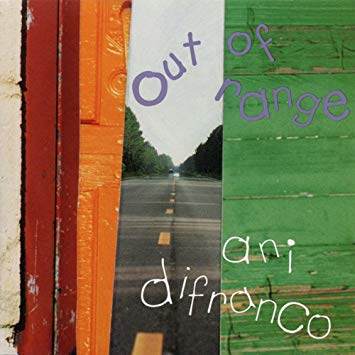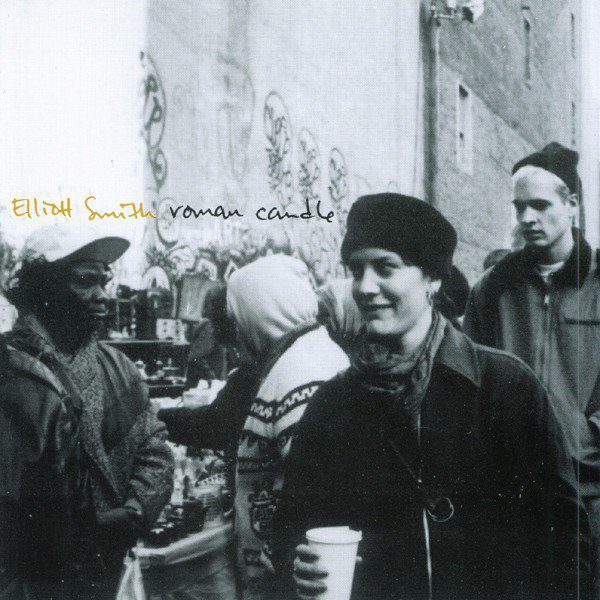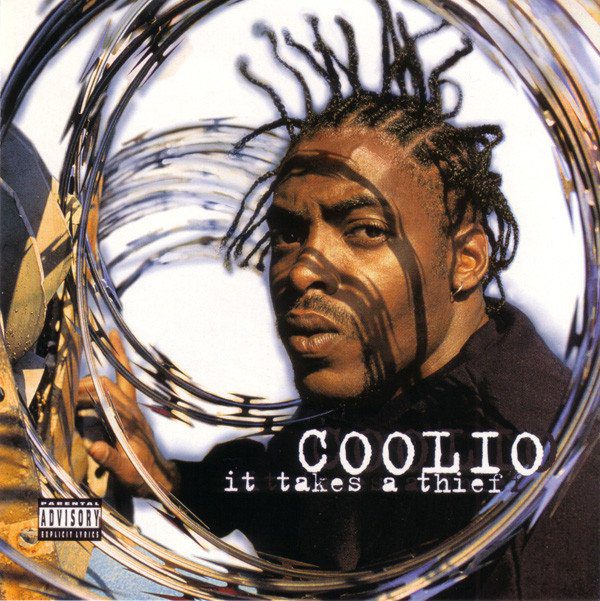This month in PopCulture25YL, we’re taking a look at the music, shows, video games, and whatever else we want from the month that was July of 1994.
At the Comic Shop
The Summer comic book events of 1994 by John Bernardy
TV was offering nothing but re-runs, but the comic book industry brought out their biggest stories just like the movies carted out their blockbusters. This year, DC Comics tried to fix up its continuity issues with a soft sequel to Crisis on Infinite Earths, Marvel did a much smaller X-Men crossover, and Valiant Comics installed a kitchen sink into their make-or-break company-wide event.
Zero Hour: Crisis In Time got its subtitle because DC Editorial wanted this to be thematically tied to Crisis On Infinite Earths, the 1986 12-issue miniseries that was meant to streamline the continuity of the DC Universe. Zero Hour was meant to fix the continuity problems that still remained after Crisis, as well as streamline the various future timelines into a single one. But unlike Crisis, which had a cosmic force approaching Earth and destroying things as it approached, the crisis to all reality came from a human origin.
The beginning of the story came as a bankshot from the Reign of The Supermen storyline. The villain Mongul destroyed Coast City near the climax of the story that revealed the one true Superman was alive after all. While the destruction was catastrophic, it was also the home city of the current Green Lantern, Hal Jordan. At the beginning of 1994 in the Emerald Twilight storyline, Jordan couldn’t deal with the trauma of losing everyone he loved, went insane, and destroyed a large majority of the Green Lantern Corps, becoming the villain known as Parallax. And in Zero Hour we see Parallax using all of the skills and willpower he developed as a Lantern to recreate the entire universe so that Coast City was never destroyed. Except he has to destroy the universe of this current DC reality before he can rewrite it. I like that a Crisis-level event came from a powerful hero processing and not processing his trauma. It was a compelling, organic way to realize the company’s mandate to fix continuity issues.
I wish the series could’ve been a six-issue miniseries instead of five, since it’s counting backwards from four to zero. It would’ve been much more satisfying to count down like 5, 4, 3, 2, 1, 0. But I’m glad they didn’t unnecessarily stretch out the story any more than they did.
The fading out of artwork and then the word balloons, then the panels themselves, as the series went on was a nice aesthetic touch that went through the miniseries and all 29 tie-in issues. And considering the converging of all the timelines set in the future, this was a nice stopping point for L.E.G.I.O.N ’94 and Valor. It was also the final issues for Team Titans and Justice League International, and a reboot point for Legion of Super-Heroes and Legionnaires.
Did Zero Hour have any lasting effects or cause its own continuity problems? Of course it did. That’s what 2005’s Infinite Crisis was all about fixing. But Zero Hour was a valiant attempt, and I’ll always love it for aging up the JSA and setting the stage for James Robinson’s Starman, the lone book with lasting ramifications that launched from this crossover. But more on Starman next month when it debuts during Zero Month when we’re presented with the new status quo of everyone.
It’s telling that all the Valiant wikis have minimal plot synopses for this event. It’s the writing (or not) on the wall that all the fans seem to remember Chaos Effect about as well as I do.
After three years of being the new company big enough to rival Marvel and DC with their storytelling chops, Valiant products finally proved they were a creation of a venture capitol group that wanted less to create comics that told great stories and way more to create comics that rode trends and made them bank. And just this month, the company was sold to Acclaim entertainment as Valiant was—and I say this sarcastically—poised to take over the Summer with their second line-wide crossover.
The first, Unity, is one of the storytelling hallmarks of the ‘90s, and I went into the joy that was that series in a previous PopCulture25YL, but The Chaos Effect was anything but. It began with a free issue just like Unity did—Chaos Effect Alpha—and it ended with Chaos Effect Omega. Like Unity it had (not counting Chaos Effect’s two epilogue issues) 18 parts. Except instead of the middle 16 books consisting of two books each for Valiant’s eight titles, we had 16 individual books. The Valiant universe had more than doubled in output and it wasn’t an easy-to-read slate of books anymore. I’d like to think Chaos came to the crossover’s title naturally.
I read Alpha but I can’t remember much other than one of Solar’s enemies Dr. Eclipse began the universe-shaking events, and Shadowman’s main villain Master Darque was involved as well. But the main story wasn’t tightly tied together like the simplicity of Unity all being a location where all times and space converged. This was told in segments titled Beta, Gamma, Delta and Epsilon, grouping four comic issues per letter. Why? I couldn’t tell you. It was hard to find all the issues, and to be perfectly honest Alpha did not grab me beyond that cover. I know the different letters had different parts of the story, but it didn’t pull together enough for people to geek out on it and plug the plot connections into wikis for die-hard fans. Because it doesn’t really have any anymore.
While DC was rolling out their Zero Hour event, Marvel was using their summer crossover The Phalanx Covenant to set up a comparatively smaller launch of a single X-Men book, Generation X. Marvel’s Summer event only stretched across nine comic book issues over the course of July and August, and those issues further split to tell three separate stories. It’s much less ambitious than Zero Hour, which is good because this storyline has turned into more of a small memory than a major event with X-Men fans at large.
The Phalanx were apparently humans who learned how to use a virus from a techno-organic alien character known as Warlock to become techno-organic themselves in order to fight mutants. I remember looking at those covers and saying “what the hell is this?” The Phalanx seemed unconnected to the X-books that I was reading in 1993. I also didn’t know the then-dead New Mutants characters Warlock or Doug Ramsey, so the hybrid character made from their likeness—Douglock—had no emotional pull on me. There was no need in me to read these then, or now.
I chose instead to skip right over this whole event to my favorite artist ever Chris Bachalo’s X-debut in Generation X come October. I didn’t need to know why the kids in the school were assembled. That story was told in the Generation Next part of Phalanx Covenant as the kids’ future headmasters Banshee and White Queen save the kids from the Phalanx. But the Phalanx didn’t even intrinsically matter to that book as it moved beyond its first storyline.
As far as summer events go, Phalanx Covenant is a blip on the radar. Hell, as far as X-Men events go, this is a blip on the radar. If you’re a completist, there will be a lot to enjoy. But you don’t need it to understand anything.
CDs On Rotation In Our 6-Disk
DGC Rarities, Volume 1 by John Bernardy

If this were a Stefan segment on SNL’s Weekend Update, it’d go like this: This album has everything. A happy Counting Crows song. A Weezer song about their lawyer. A Nirvana song you know but with different words. Beck making fun of Eddie Vedder. Hole.
I find it pretty crazy that so many big bands were on the DGC Records label, but here they were. Teenage Fanclub, Nirvana, Weezer, Hole, Beck, Sonic Youth, Counting Crows, and The Sundays; all here with a number of other folks.
The reason why you’d remember this is Counting Crows’ “Einstein On The Beach (For An Eggman), which is a great song that could’ve gone on their album except according to the band it wasn’t “mopey enough” to fit with the other songs on the it-kills-me-it-came-out-in-1993-and-I-can’t-write-about-it-here classic debut album August and Everything After that I was obsessed with in July 1994. Listening to it again, I noticed a few spots of melody that I accidentally put into my own songs a decade later. The song made an impression.
I was mistaken that the rest of the album wasn’t much to talk about. Sure, there are some demos, like Hole’s seemingly unfinished contribution, or Nirvana’s “Pay to Play” which is their Nevermind song “Stay Away” with alternate lyrics. But there’s also some serious gems here.
The flute section of Sonic Youth’s “Compilation Blues” is positively bonkers and worth finding in between the mellow intro and outros. Beck’s lyrics in “Bogusflow” are lamenting all the bands trying to sound exactly like Nirvana. Weezer’s “Jamie” reminds me of the vibe in “My Name Is Jonas” and is really an ode to the band’s first lawyer they did as a school project.
As for the bands I knew much less about, The Posies’ “Open Every Window” has some moments of close harmony that almost remind me of Alice In Chains. Murray Attaway’s “Allegory” would fit in on any Death Cab For Cutie album after Plans and that’s a good thing. I bet they’d cite Attaway as an influence.
Sloan’s “Stove/Smother” starts with the same kind of beat as Biz Markie’s “Just a Friend” but the band just adds a piano and quiet vocals on top before a normal grunge sound takes over the song. I’m curious to hear what the rest of this band’s music sounds like.
My favorite find on the compilation is the band that dog (they made their name lower case, not me). that dog’s “Grunge Couple” is what you get if you get Liz Phair and a fiddle to perform a Nirvana song. I have never heard fiddle in the mix of grunge but I dig it. And then the song changes tone and gets real pretty for about 30 seconds. I enjoyed the hell out of that one and I’ll definitely be looking for more from them. It’s nice when you pick up an album for one song and figure out there are treasures throughout.
Ani DiFranco- Out of Range by John Bernardy

I’m a big fan of Ani, but my favorite period of her albums are book-ended by her live albums Living in Clip (1997) and So Much Shouting, So Much Laughter (2002). And most of the songs on Out of Range are done with much more energy, spontaneity and intensity on Living in Clip. When I finally circled back on Ani’s early catalog, her self-titled debut maintained the energy from the live show, but others like this album end up just feeling tame by comparison.
Which is absolutely ridiculous. There is absolutely nothing wrong with any of these songs, and really, about a quarter of the songs weren’t on the live albums anyway. The only thing missing from the ones I recognized is an audience egging DiFranco on as she plays with their expectations. Admittedly, she’s one of those personalities that rises beyond herself for live shows, but the effect of the original arrangements here are so close to what her two live albums presented that it can’t help but live in their shadows.
If you haven’t listened to the live albums yet, go back to this one first (or that divine Ani DiFranco) and listen in order. The lyrics here will blow you away how simultaneously poetic and cutting they are. DiFranco can make pretty songs, and angry ones, and often times they’re wrapped around each other so well that you could get so lost in one side you might not notice the other. She regularly blends styles, leans into her distinct guitar style, drops in political angles, sticks up for women’s rights, and has no trouble at all telling stories about people just hanging on and trying to make it. I love her sense of percussion, put into her guitar playing, the way she shoots the lyrics out of her voice, and any variety of drums. She makes you want to think and move or sway.
If I had to pick biggest winners from this album, I’d have to say “Overlap” is near the top, followed by “You Had Time”—complete with piano intro. “If He Tries Anything” has a solid ending for its studio version. “The Diner” was a fun rough draft of an experiment. And I like the acoustic version of “Out of Range” better than the electric version—this album had both. Ani loaded this thing up with quality for people and it may not have broke her into the mainstream like Dilate did two years later, but it’s just as good as that album.
Amorphis- Tales From The Thousand Lakes by Will Johnson
Though produced in what was likely the beginning of a typically chilly winter-to-be in Finland in late 1993, the mostly impossible-to-categorize heavy metal band Amorphis unleashed the blackest of winter days in the summer of 1994 with their cult classic Tales From The Thousand Lakes. While the band itself has morphed and mutated over the decades, settling on a more operatic and grand melodic death metal essence with permanently installed singer (and growler) Tomi Joutsen in 2005, the band began its journey to the upper echelon of metal as a fairly typical death metal band with their first release The Karelian Isthmus in 1992.
The album, while punishingly heavy (if not poorly produced), dealt in the typical mysticism and dark magic associated with death metal, with spooky songs like “Black Embrace” and “Misery Path”. Where the album broke out of its often redundant routine though was with sprinklings of folk melody and an emphasis on the Finnish band’s homeland in the lyrics. Songs like “Grail’s Mysteries” and “Warriors Trial” manage to remain gloomy and pitch black enough to remain death metal but, thanks to little infusions of exotic musicality from guitarists Esa Holopainen (lead) and Tomi Koivusaari (rhythm), the oft-repetitive nature of the songs gain a bit of character. Lyrically, “Grail’s Mysteries” is grounded in real history but “Warriors Trial” has a more ambiguous nature to the swords and potential sorcery it depicts, something common of Finland’s national epic The Kalevala, a work of poetry similar to Greece’s The Odyssey that gives the country’s foundation a sense of magic.
For their second album, Tales From The Thousand Lakes, Amorphis decided to go into the less grounded world of battlefields and earthbound warfare (The Karelian Isthmus is a real stretch of land in Russia that borders with Finland) and embrace this magical history of Finland by releasing Lakes as a concept album. Of the ten tracks, six contain lyrics directly from The Kalevala itself (one song is a keyboard instrumental while the other two have lyrics and music written by Holopainen). The change in lyrical direction, attached to the already moody and dark aura of death metal, would be impressive enough, since the band found focus with a theme, instead of mimicking other black metal bands.
But the change wasn’t just simply a theme, it was also in the music itself. Amorphis added a keyboardist to provide additional atmosphere and another level of storytelling to their songs. The sometimes tranquil and ethereal synthesizers would atypically merge with the heaviest of guitar riffs and blast beats, lending a massive scope to each piece. They also added a “clean” vocalist (Ville Tuomi) to go alongside guitarist Koivusaari’s death growls. Much like the keyboard/synth—guitar back and forth, the mixture of vocalization on the album gave the storytelling nature of the album more character (plus, added bonus: you can understand what they are saying sometimes!).
The addition of clean vocals and keyboards/synthesizers is not enough, of course, to make the album truly stick out. Abandoned the traditional format of death metal completely, Amorphis set out to make an uncategorized metal album with Lakes: an album that starts with a synth/piano heavy instrumental, switches to a crushing death metal introduction with “Into Hiding”, then switching gears to an almost Egyptian like folk groove in “The Castaway”, before switching, in various songs, to Black Sabbath era doom riffs, arcade-like keyboard choruses, and, in one insane instance, a dedicated homage to The Doors. What you get with Tales From The Thousand Lakes is less a metal album and more a sonic adventure that would often recreated but never exactly duplicated, even by the band itself.
Elliott Smith- Roman Candle by John Bernardy

This album is only a half hour long. It’s acoustic, done on a four-track and a cheap Radio Shack mic by Smith himself, and was intended to be slimmed down into a 7” single but his label Kill Rock Stars loved it so much they wanted to put out the whole thing, nameless tracks and all. And hence Elliott Smith’s debut album was born.
It’s got a pretty quality while being fairly morose. Smith’s voice per usual is real and as quietly strong as it is broken. If you recognize the name but can’t place his style, think “Needle In The Hay”, which was used famously in The Royal Tenenbaums when Luke Wilson’s character was shaving.
Smith is the epitome of raw nerves and restraining emotions. He’s definitely worth acquainting yourself with, especially if you’ve ever felt down. But if you’re feeling too down, you should probably wait a while. This can lull you into introspection, but considering his drug use, ADHD and depression are barely veiled you could find yourself a little too kindred a spirit if you’re in a bad spot.
This is most easily displayed in the song “Last Call” which I’d have to say is the most compelling song on the album. My second favorite track is probably “Kiwi Maddog,” the instrumental album closer. It reminded me of a beach shack around closing time on a mellow night.
Coolio- It Takes a Thief By John Bernardy

The only thing I knew about Coolio in 1994 was that “Fantastic Voyage” video that was on all the time when I wanted to see something else like the Beasties’ “Sabotage” or Aerosmith’s “Crazy” (You know, the one with Alicia Silverstone and Liv Tyler up to shenanigans? Yes you do).
The “Fantastic Voyage” video was everywhere. I remember Coolio and his crew driving around in that car with the impossible trunk that people kept walking in and out of. This was a party song, and a fun one, complete with a chorus sampled from the original hit by the same name, but I never listened to this one’s lyrics.
The lyrics—and really, the rest of the album—are much darker. It’s all stories about growing up in the hood as a gang member. The songs are much more in keeping with “Gangsta’s Paradise”—the unavoidable song from next year’s Dangerous Minds soundtrack—than I expected. When “Gangsta’s Paradise” debuted I thought it was a hard left turn from this music, but it’s what Coolio was always trying to do when he wasn’t trying to be Snoop Dog.
“It Takes a Thief,” the title track, reminds me so much of Snoop with that almost-singing rapping style and everything, and it really leans hard into the “Murder Was The Case” vibe. Not sure how much Coolio wanted that comparison versus how much the studio wanted it, but that’s what we ended up with.
The album’s decent, and I can tell it’s trying to be earnest with the storytelling, but it seems like it’s leaning too hard into the west coast style to be overly unique. It’s still worth a listen, but most of the time it’s probably better to just turn on that video and ride, ride…


